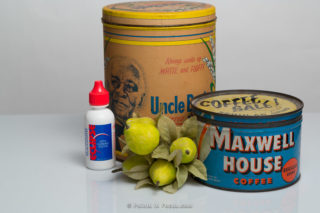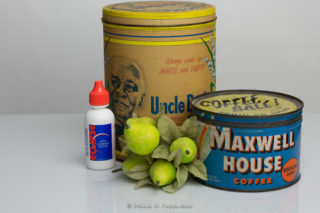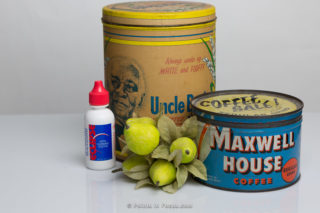Cheap Continuous Lighting, Problems with Alternatives to Tungsten Part 1
A while back, I linked to an Academy of Motion Picture Arts and Sciences study on “Solid State” Lighting. Specifically of interest to me was the simple fact that none of their tested “solid state” sources–which included CFLs, LEDs, and plasma technologies–reproduced colors the same way the tungsten lamps they claimed to be direct replacements for did. Worse yet, while the colors looked right to the eyes of the cinematographers, they were wrong on film and video, and not correctable in color grading.
Though my next-to-zero-budget video lighting setup is in no way cinema quality, there are still compelling reasons to want to move away from tungsten hot lights to more modern alternatives, such as CFL and LED. For me the biggest of those reasons is heat.
There’s a problem space here that’s not at all unlike the still photographers problem of balancing shutter speed, aperture, and ISO.
Even with the incredibly high ISO capabilities modern digital video cameras provide, video production still requires a tremendous amount of light to shoot. In many cases, I find it’s necessary to shoot at ISOs as high as 3200 and 6400 to get the needed balance in depth of field and exposure. That light, at least when it’s provided by tungsten sources mean heat, and heat means air conditioning.
Heat poses an interesting problem. If there is no need to record audio, then dealing with the heat is as simple as turning up the AC and running some fans. However, none of those noise sources can really be running when you’re recording audio. In the end, video needs light, tungsten lights are hot and require cooling, and cooling the set and subjects interferes with recording audio.
To a lesser extent, the secondary benefit of non-tungsten light sources is energy savings. CFL and LED sources are more efficient. They waste less energy as radiated heat, which saves money on cooling, but also lowers the amount of power the lights use directly. I can tell you from experience, I’m not especially fond of sitting in front of a 250W lamp for any length of time, never mind even being in a small room with a 500W or 1KW light that’s on for any appreciable amount of time.
Switching seems to make sense, and probably isn’t that big of a deal if you aren’t really critical about your equipment rendering colors. In the following series of images, I’ve exposed the same scene and color balanced them to render neutral whites. These test shots were made with generic hardware store CFLs, the kind of thing you might use if you were trying to get some kind of no-budget CFL lighting going.
 |
 |
 |
Okay so going into this I didn’t really expect things to be prefect, and they aren’t; not even close. You’ll notice shifts in the blues and rends on the Maxwell house tin, and in the red cap on the Eclipse bottle. As well as in the writing on the Uncle Ben’s tin.
Is accurate color rendition really that important?
I think it is, especially since I rely on my equipment to be able to sort things out like getting colors right. This applies doubly so as I don’t want to light a person I’m interviewing then get to post and have to choose between them looking sickly or the rest of the colors in the scene not matching. It’s certainly enough of a problem to me to give me pause and keep me looking at light sources.
Unfortunately, I didn’t have access to any high (95+) CRI CFLs intended for photo lighting when I did this test, nor did I have any LED lamps available. I intend to revisit the issue in the future when I have a chance to try some of those light sources. Additionally I’ve been using more and more LED lamps as general room lighting and have become more comfortable with them as a continuous light source, so I’d also like to look at how well say LED flood lights might work as a low budget source.
The second problem with zero-budgeting many of these sources is simply that there are large design issues with them. For example, an 85W CFL, which produces the equivalent light of a 250-300W tungsten lamp, is almost 9 inches long. Compare that to a ECA (250W) or ECT (500W) tungsten lamp which is barely 6” long. Most tungsten fixtures have been designed to accommodate the short lengths of the tungsten lamps. For example, using an 85W CFL in my Smith Victor A80 Ultra Cool lights means the lamp projects well past the front edge of the reflector.
LEDs aren’t much better in many ways. The Phillips LED lamps(Affiliate Link) I’ve been using seem to be designed to throw more light out radially around the axis of the lamp, as opposed to in all directions evenly. The second problem is just finding suitably powerful ones. 200W equivalent CFLs are hard enough to find, but available, as they’ve become used for photography. 200W equivalent LEDs in a screw in form factor simply don’t seem to exist yet.
So where do things stand now?
Well for me I’m still using tungsten lamps in tungsten fixtures and suffering for the moment, I can deal with hot in short spurts. Moving forward on the low-budget end, I’ve been looking at some inexpensive LED arrays (like these(Affiliate Link) or these(Affiliate Link) ) but I haven’t tested any yet. I’ve also been considering playing around with photo CFLs in my existing fixtures, however, at $50 a pop that’s, for the moment at least, a big gamble on a technology that’s already proven to be less than perfect.
If there’s one thing that’s clear to me, it’s that there doesn’t appear to be any panacea. LEDs and CFLs are coming and manufacturers are going to steadily improve them. At least I hope they will. But for the moment, I’m finding it hard to move away from tried and true tungsten.